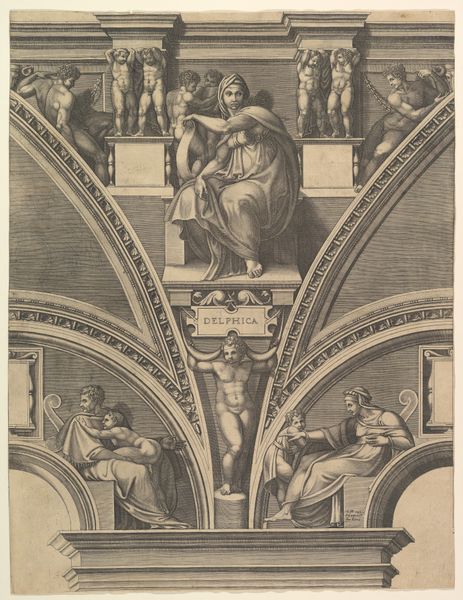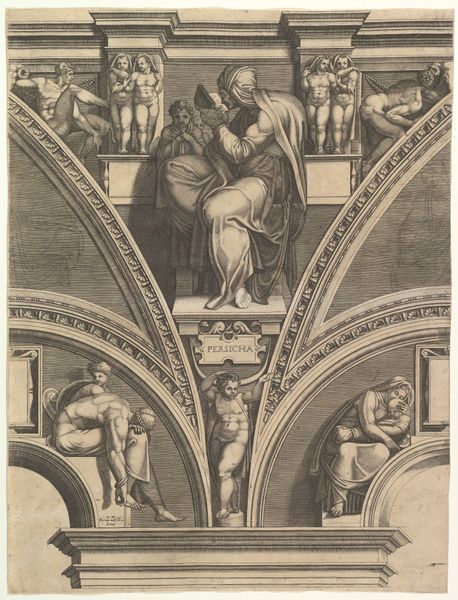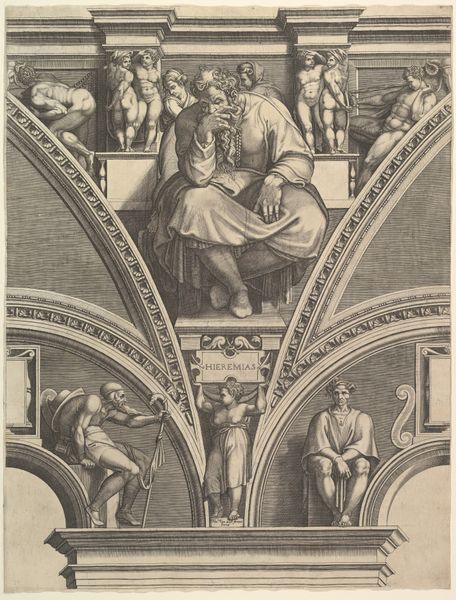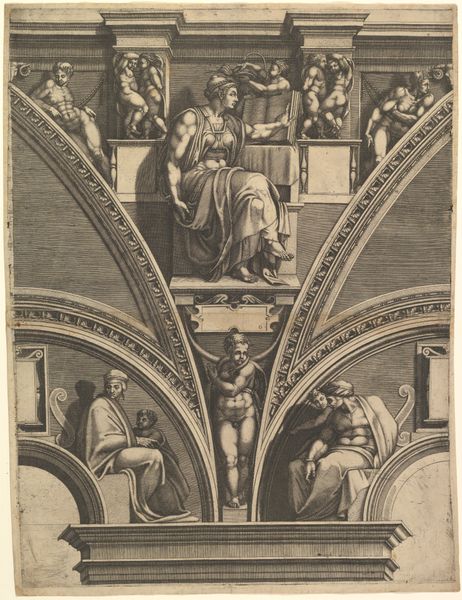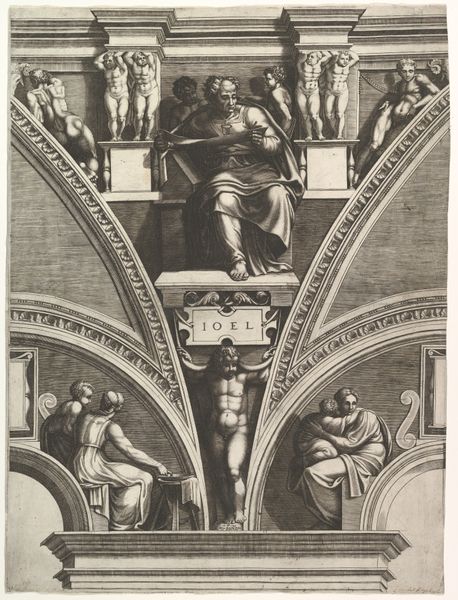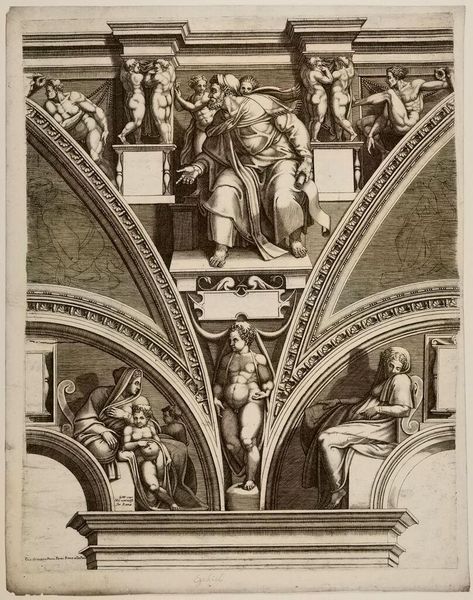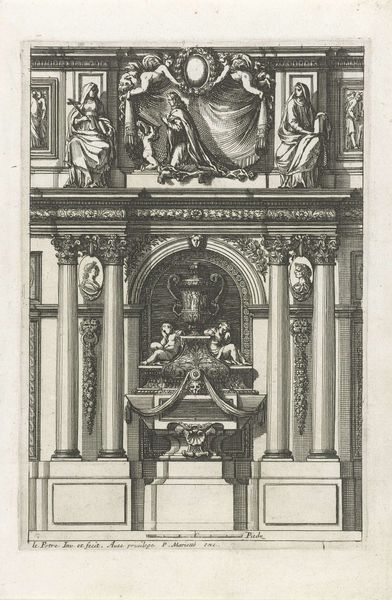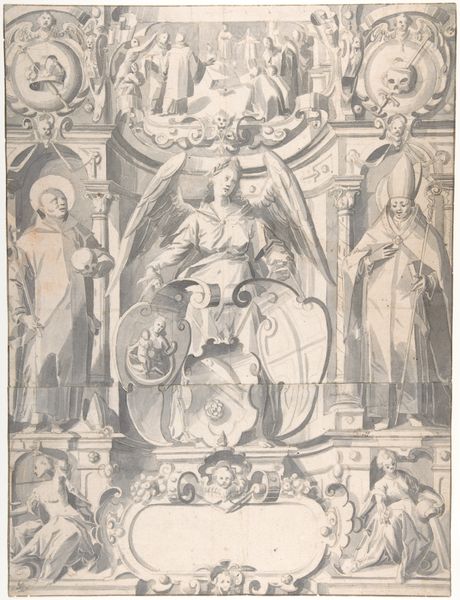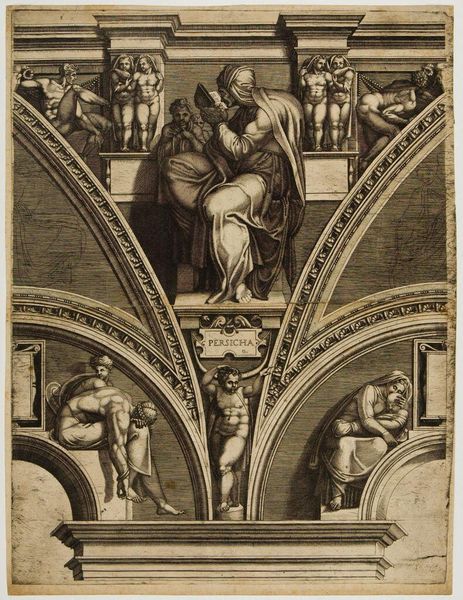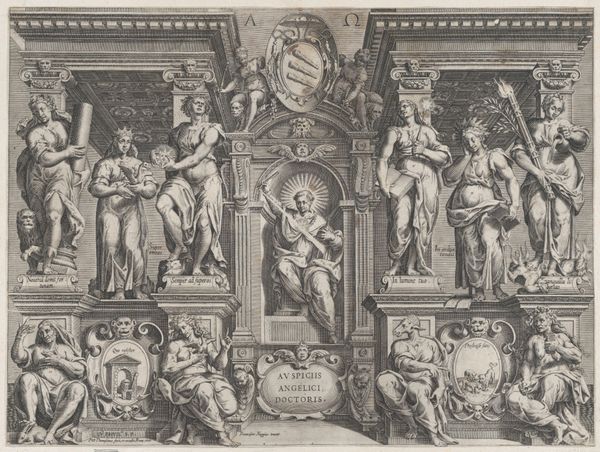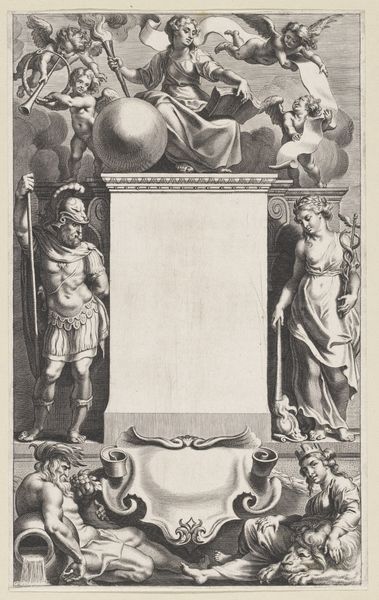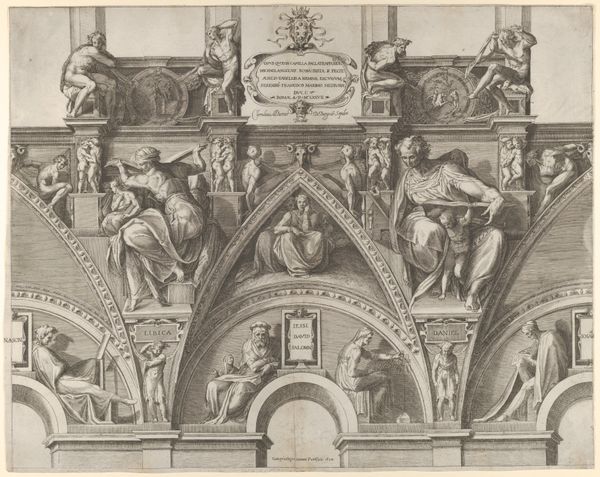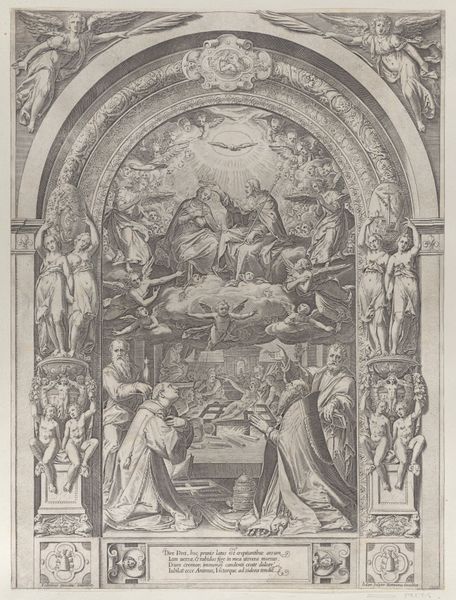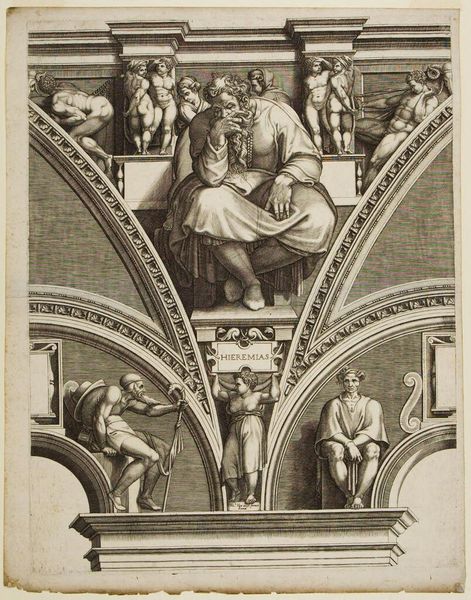
The Prophet Ezekiel, from "Prophets and Sibyls in the Sistine Chapel" 1570 - 1575
0:00
0:00
drawing, print, etching, engraving
#
drawing
# print
#
etching
#
prophet
#
figuration
#
history-painting
#
italian-renaissance
#
engraving
#
male-nude
Dimensions: Sheet (Trimmed): 22 1/8 × 17 1/8 in. (56.2 × 43.5 cm)
Copyright: Public Domain
Curator: Giorgio Ghisi’s “The Prophet Ezekiel, from ‘Prophets and Sibyls in the Sistine Chapel’” presents a compelling, multi-figured scene in engraving and etching. This dates from around 1570-1575 and can be found at the Metropolitan Museum of Art. What's your first impression? Editor: It feels like controlled chaos, paradoxically. So much detail crammed into this arching space, all in stark monochrome. My eye jumps around trying to take it all in, especially the sheer physicality of the figures. Curator: Absolutely, there's a dynamic tension. Ghisi masterfully translates Michelangelo’s frescoes into print, yet it’s not just a copy. There’s a real dialogue happening. Ezekiel himself is imposing, seated above everyone. What is he pointing towards, or, indeed, away from? I wonder. Editor: His gesture is key, isn't it? In that historical moment, where the church was doubling down on doctrine amidst Reformation challenges, his pose seems less about divine inspiration and more about demanding adherence to tradition. It’s almost authoritarian. Curator: That's a strong reading! I also find the supporting figures – the children, the male nudes, and the sibyls – compelling. They're like echoes of Ezekiel's authority, reflections of different facets of faith, of interpretations lost in time. Editor: Right, they act as framing devices but they are not just decorative! The Renaissance ideal, with the glorification of the male nude, for example. Then compare them to the sibyl figures beneath Ezekiel – where is the agency or voice of women? What's illuminated and what remains obscured by their proximity? Curator: Perhaps their positioning, below him, but supporting the very architecture he occupies suggests a foundational role in the prophecy that might otherwise remain unseen, or unheard. Editor: I like that! The figures echo around and the engraving almost asks us what they might say were we given a chance to sit among them and participate in the construction of history itself. Curator: Ghisi truly leaves us contemplating echoes across centuries and that makes this piece linger in the mind, and, of course, encourage one to view the chapel again, perhaps with newly opened eyes. Editor: Indeed. The way Ghisi invites us to examine not only the visual elements but also the ideological underpinnings gives this engraving its lasting power.
Comments
No comments
Be the first to comment and join the conversation on the ultimate creative platform.
